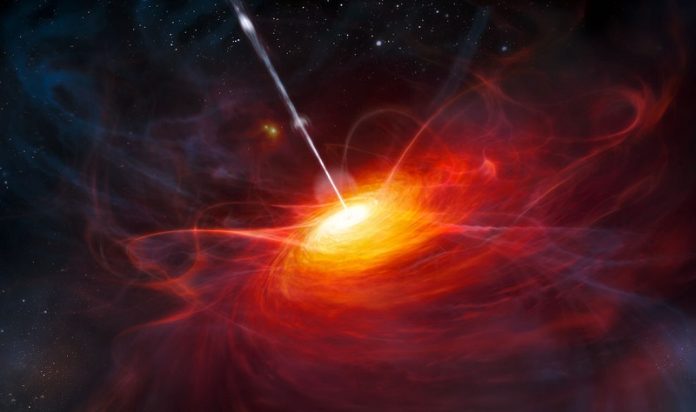
Life is rare, and it requires exactly the right environmental mix to establish itself. And there’s one surprising contributor to that perfect mix: gigantic black holes.
Life requires a certain combination of elements to make itself possible: hydrogen, nitrogen, carbon, oxygen, phosphorus, and sulfur.
Hydrogen has been hanging around the universe since the first few minutes of the big bang, but the other elements only come from fusion processes inside of stars.
Galaxies need several generations of stellar lives and deaths before a solar system like our own can be possible.
But left to its own devices, star formation in a galaxy can proceed far too rapidly, burning through material too quickly, the stellar generations coming and going in a blink.
One thing that can put the brakes on this kind of out-of-control star formation is the activity tied to supermassive black holes.
Giant black holes sit in the hearts of almost every single galaxy. Their intense gravitational strength can pull material towards it.
The swirl and turbulence of gas will send material careening towards the galactic center, where the waiting black hole is more than eager to devour it.
As the gas crams itself down the throat of the vent horizon, it will heat up to over a trillion degrees, releasing a flood of high-energy radiation in the process.
That radiation floods the rest of the galaxy, heating up the rest of the gas. To make stars, the gas in a galaxy has to be cool, allowing it to collapse to high densities.
But if it’s heated by outbursts from the central black hole, it can’t make new stars.
After enough time, however, the gas cools off and resumes star formation, and the entire cycle starts again.
This feedback process from the central black hole keeps star formation in a galaxy regulated. Without the black hole, galaxies would use up their available material much quicker, possibly before the ingredients needed for life can circulate and spread throughout the galaxy.
So the next time you take a deep breath and feel grateful you’re alive, thank a supermassive black hole.
Written by Paul M. Sutter/Universe Today.



